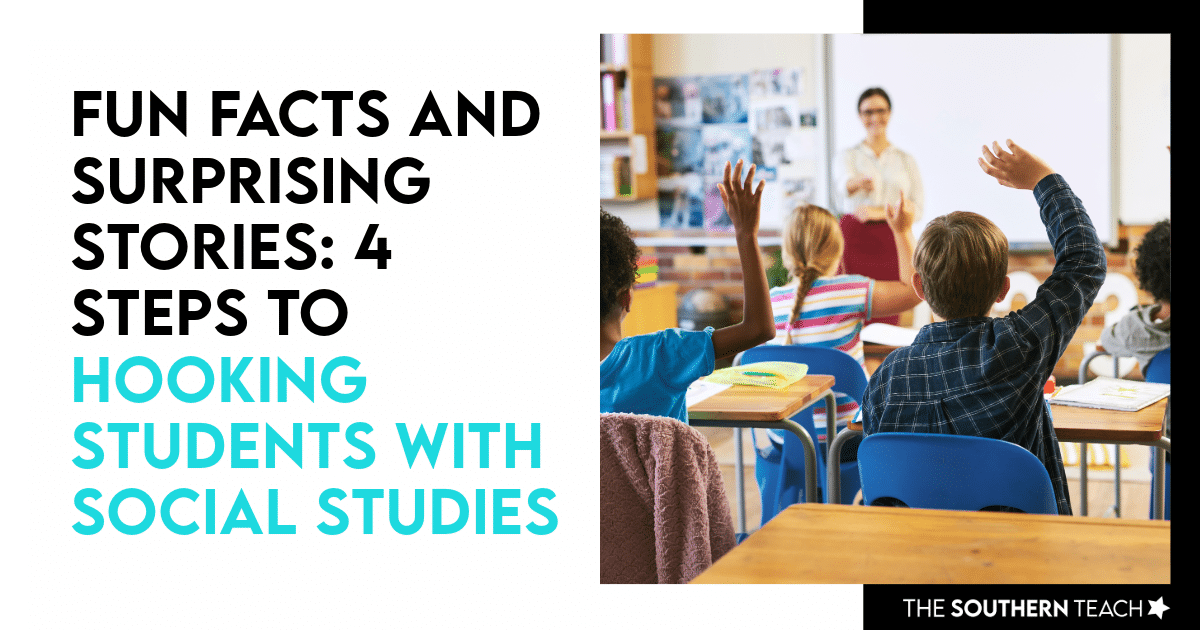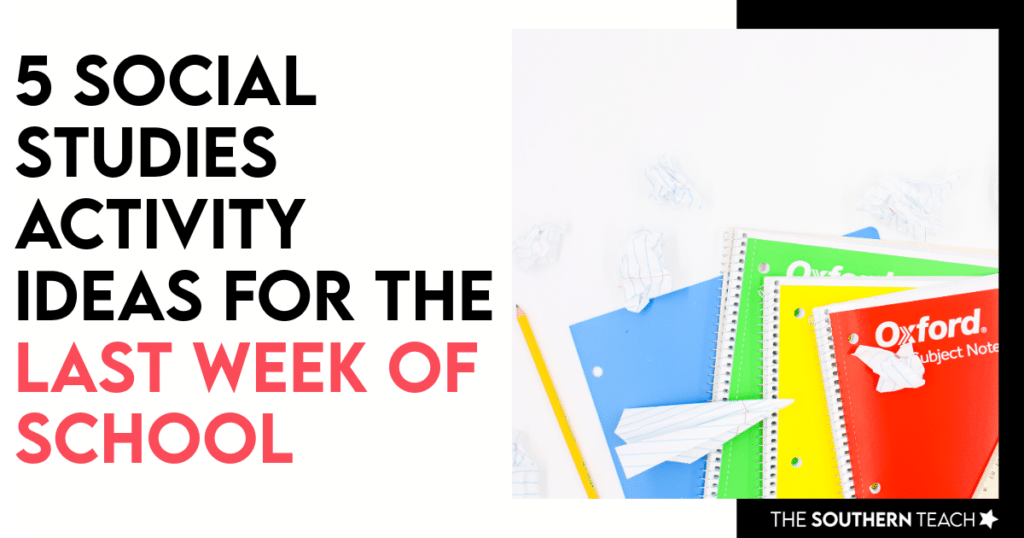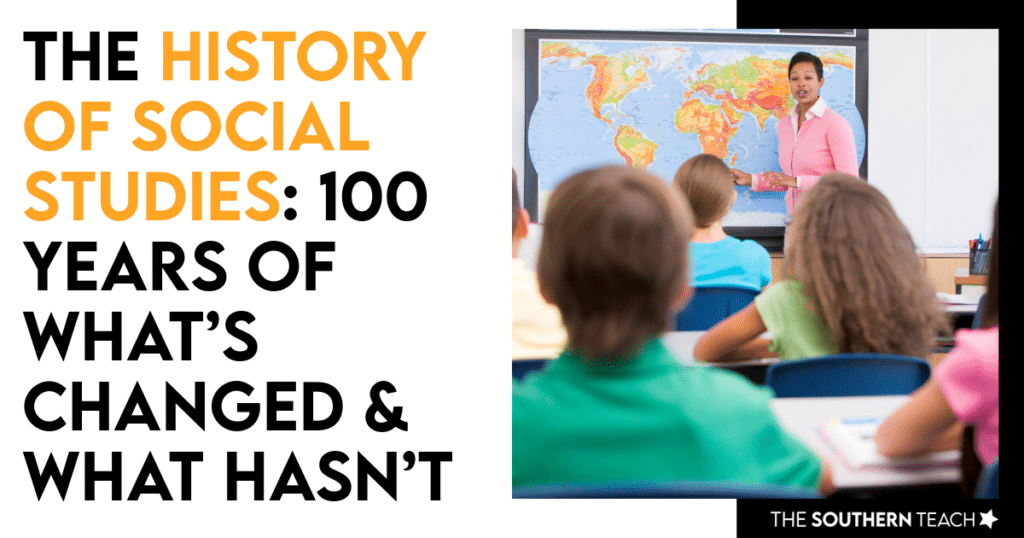Fun Facts and Surprising Stories: 4 Steps to Hooking Social Studies for Students
By Kirsten Hammond
Share This Post:
Are you always looking for ways to get your students excited to learn about history, geography, or civics? I know it can be challenging to find ways to excite students and hooking social studies, especially when they think the topics are boring. It takes a lot of work and creativity to change the initial opinions of students.
Luckily, I have a secret to share with you! By using fun facts and surprising stories: 4 steps to hooking social studies for students transforms learning! Students love the weird, the surprising, and the humorous. Thankfully, this list is ready to increase engagement the moment students enter the classroom.
The Importance of a Hook
The reality is that students have short attention spans. In a world where we can fast-forward through ads and commercials, waiting for the big reveal is challenging. This is especially the case in the classroom. Students do not want to sit and wait for the enjoyment to begin. They want to come into the classroom and enjoy learning right away. Otherwise, they want to tune out the lesson, which teachers know cannot happen. This is exactly why learning different techniques to hook students is critical. The perfect hook for a lesson ensures students are focused and excited to learn!
Hooking Social Studies for Students
Unfortunately, many students enter the social studies classroom with preconceived beliefs that the subject is pointless and boring. Luckily, using fun facts and surprising stories: 4 steps to hooking social studies for students changes everything! Students will soon see the joy, engagement, and interest in learning history, geography, and civics.
1. Start with Weird or Surprising Facts
The first step is to lead with the unexpected. When you begin a lesson with a surprising or weird fact, you immediately grab your students’ attention.
For example, did you know that a park ranger named Roy Sullivan survived more lightning strikes than any other human? Sullivan was hit by lightning seven times! He was struck once in 1942 and on six more occasions between 1969 and 1977 – a rate of almost once per year. Or, did you know that Cleopatra lived closer to the invention of the iPhone than the building of the pyramids by about 237 years?
By starting with a fun fact like this, you can instantly turn a lesson from “just another history class” into something students are eager to learn more about. Encourage them to ask questions like, “How is that even possible?” or “What happened next?” Once they’re hooked, you’ve got their attention to dive deeper into the actual lesson.
2. Use Humor to Humanize Historical Figures
Next, try humanizing historical figures by sharing funny or relatable stories about them. So often, students think of famous figures like George Washington or Marie Curie as distant, larger-than-life characters. When we add a humorous, human element, it makes these people more relatable.
For instance, you might tell your students that Abraham Lincoln was a champion wrestler—seriously! He competed in nearly 300 matches and only lost once.
Stories will help students see historical figures as real people and make them curious to learn about their lives and accomplishments.
3. Tie Surprising Stories to Key Concepts
It’s not just about sharing random facts. It is essential to tie the fun stories into the larger lesson. Use those quirky details as a bridge to get into the main concepts of your lesson.
For example, if you’re teaching about the American Revolution, you could share that Paul Revere didn’t shout, “The British are coming!” He actually used a more secretive approach since most of the colonists in Massachusetts still considered themselves British. Instead, he used “the regulars are coming out.” This surprising twist is a great lead-in to discussing the complexities of loyalty and identity during that time.
By incorporating unexpected or little-known stories, students are more likely to remember the broader concepts because the fun fact helped them make a mental connection.
4. Let Students Research Their Own Fun Facts
Finally, give your students the chance to discover their own weird and surprising facts. This is a great way to foster curiosity and get them more involved in their learning. You could assign a project where students research fun or unexpected facts about a historical figure or event. Students can then present their findings to the class.
For example, while studying the Renaissance, one student might discover that Leonardo da Vinci was ambidextrous. He could write with one hand while drawing with the other at the same time! Another might uncover that Tsar Peter the Great of Russia was very interested in medicine and had a collection of teeth he pulled from people.
Allowing students to find these tidbits engages them, builds research skills, and makes the lesson interactive.
Using fun facts and surprising stories: 4 steps to hooking social studies for students is the key to transforming learning. By hooking social studies the minute the lesson begins, teachers can capitalize on learning. Students will be intrigued, engaged, and eager to learn the moment they enter the classroom.
kirsten hammond
Kirsten is a former 3rd and 5th grade teacher who loves helping upper elementary teachers by creating resources and sharing ideas that are engaging, research-based, and TEKS-aligned. She is a work-from-home mama of 3 rambunctious little ones and loves running, true crime, and lots of coffee.






















